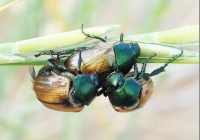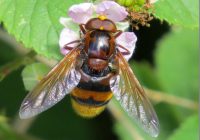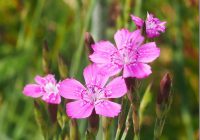Dr Phil Smith’s Wildlife Notes
June 2018
It was the driest June on record according to the Met. Office and, by the end of the month, we were well into the most serious summer drought since 1976. But, as Pennine moorlands went up in flames in the 30o heat, the TV weather presenters were in raptures: “It’s glorious out there” was the daily refrain. By great good fortune, there were no major fires on the Sefton Coast but the normally drought-tolerant dune plantlife struggled, large areas of vegetation turning straw-coloured. Luckily, a relatively wet winter meant that the dune-slacks remained damp enough to support specialists like marsh-orchids, while the deeper scrapes and ponds produced lots of warmth-loving dragonflies.
One highlight of the summer came on the first day of June when, following up a report of a Red-veined Darter at Ainsdale Sandhills Local Nature Reserve, I found not one but three of these colourful dragonfly migrants from Europe basking on bare sand around Natterjack Toad scrapes. As there was no national influx, there was speculation that they had bred locally from a female reported last summer. Several other enthusiasts went to see them, being treated to at least seven other dragonflies and damselflies, including the spectacular Emperor, Broad-bodied Chasers and Black-tailed Skimmers. One visiting group that benefited on 9th was from the Royal Photographic Society led by Trevor Davenport. About twenty members enjoyed the opportunity to photograph the usual mass emergence of White Satin moths on the LNR, several species of orchid and, of course, the dragonflies, though the Red-veined Darters had moved on.
Dragonflies also featured on 5th at the Devil’s Hole where I found a few Natterjack toadlets, two weeks earlier than usual. Five species zooming around the retreating pools were the first dragonflies I had seen here. Also on offer was a fine display of orchids, including swarms of Early Marsh-orchids of the Nationally Scarce form coccinea, together with Southern Marsh-orchids, a few Bee Orchids and Pyramidals. Later in the month, these were followed by hundreds of Marsh Helleborines that are Red listed as Near Threatened in England but common in Sefton dune-slacks.
Reports of Red-eyed Damselflies at new localities in Merseyside led Trevor Davenport and me to visit the Leeds-Liverpool Canal at Aintree where this distinctive species can be found perching on Fringed Water-lily leaves. We logged about 25 Red-eyes, including several pairs, as well as four other species of dragonfly in this exceptional month for these ancient insects.
One of several hoverflies moving north in response to climate change is the largest of them, the spectacular Hornet Hoverfly (Volucella zonaria). At nearly 2cm long, this hornet mimic is always going to attract attention, being first recorded in Sefton in 2015. This month, at least four individuals were photographed on Ainsdale National Nature Reserve. The hot weather also resulted in a mass emergence of Dune Chafers from the frontal dunes where their larvae feed on roots. There were so many that they attracted a flock of Black-headed Gulls, neatly snapping up these beetles in flight. By the second week, lots of Dark Green Fritillaries joined huge numbers of Meadow Browns and Small Skippers in the dune grasslands, while a few days later, the first Ringlets appeared at their recently established colonies on Ainsdale NNR and at Range Lane, Formby. Surely there must be more to find elsewhere in the dunes.
Botanical surveys also featured during the month. On 10th Patricia Lockwood and Joshua Styles joined me to log 127 different plants on the former Hope School playing fields at Ainsdale. Scheduled for housing development in the Sefton Local Plan, this large area of Green Belt grassland supports several rarities, including the only native colony of Maiden Pink in the vice-county. We found three new sites for this lovely flower to add to the one previously known.
Another unexpected discovery was the tiny mauve Clustered Clover spotted by Steve Cross on the Kenilworth Road, Ainsdale, verges. Patricia and I went to see it, recording several dried-up patches of a plant whose only other locality in Northwest England is at Thornbeck Avenue verges, Hightown. Presumably the Council’s mowing equipment has spread the seeds.
Finally, on 30th, Patricia and I visited the Crosby Coastal Park dunes, where the Evening-primroses were much less abundant than usual. Despite this, we identified six different kinds, including a single plant of Small-flowered Evening-primrose, not seen on the coast for several years. More surprising, however, was the enormous population of parasitic Common Broomrape growing on Sea Holly. We counted an extraordinary 1180 flower-spikes!




